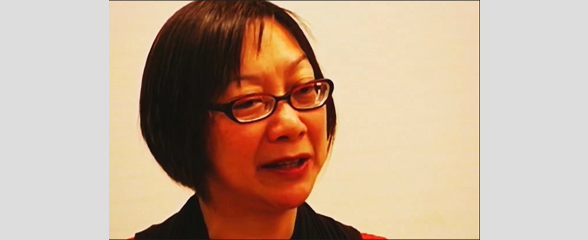Asian America;Cantonese dialects--China--Hong Kong;Chinatown (New York, N.Y)--Economic conditions;Oral history;Dumpster diving

2019.042.001 Interview with Fay Chew Matsuda
Fay Chew Matsuda (1949-2020) led the Museum of Chinese in America (MOCA) as Executive Director from 1989 to 2006. At the time of the interview, Fay was Director of the City Hall Senior Center and Program Director for Senior Services at Hamilton Madison House. She begins the interview by sharing some of her history with the neighborhood, including her apartment on the Lower East Side, Chinese school, and her family restaurant, Three Star, at 10 Mott Street. She also describes how she became involved with MOCA, the early history of the museum, as well as the various iterations of the museum from the Chinatown History Project to the more permanent Chinatown History Museum to the more expansive Museum of Chinese in the Americas. She characterizes the initial mission of the museum as collecting oral histories and presenting the history of marginalized working-class Chinese Americans and notes that in her era, its mission expanded beyond Chinatown and it became her job to build the project into a more permanent museum. Fay highlights two exhibits that resonated with her: one showcasing family stories from Cuba, Peru, and Guatemala, titled, “Mi Familia, Mi Comunidad,” and another, titled, “Both Sides of the Cloth,” focusing on the garment industry, which connected her to her mother past as a garment worker. She also discusses the PS23 exhibit and reunion series, which brought together Chinese and Italian communities, and like many of MOCA exhibitions and programming, grew out of oral histories. Two anecdotes she shares of her most memorable experiences working at MOCA involve salvaging collections, one from a noodle shop on Mott Street called the Mee Heung Chow Main Company when it closed in 1992, and the other a Cantonese opera collection from the Chinese Musical and Theatrical Association (CMTA), a club her father was a part of. In thinking about the role of the museum in its new expanded space at 215 Centre Street, Fay saw the museum as a place for both Chinese and non-Chinese to learn about other people in this world through a presentation of diverse and even contradictory stories that they find familiar yet different from their own and to foster cross-cultural interactions.